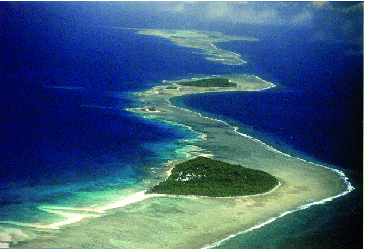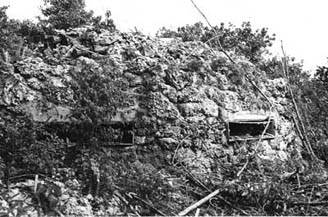|
USS John D. Henley
USS ''John D. Henley'' (DD-553), a , was a ship of the United States Navy named for Captain John D. Henley (1781–1835). ''John D. Henley'' was laid down on 21 July 1941 by Gulf Shipbuilding Corporation, Chickasaw, Ala.; launched on 15 November 1942, sponsored by Miss Shelah Keith Kane, great-great-great-granddaughter of Captain Henley; and commissioned on 2 February 1944. Service history Following exhaustive shakedown training out of Bermuda, the new destroyer arrived Norfolk on 28 March 1944. Sailing for the Pacific via the Panama Canal, she arrived Pearl Harbor on 23 April 1944. After operational training, ''John D. Henley'' escorted fleet oilers to Majuro and returned on 17 May. She departed on 27 May for Majuro once more and there became flagship of a refueling task group. Departing on 6 June 1944, the ships moved to the Marianas to refuel the fleet during the capture and occupation of Saipan and Tinian. During this long at-sea period the ships came under air ... [...More Info...] [...Related Items...] OR: [Wikipedia] [Google] [Baidu] |
Saipan
Saipan ( ch, Sa’ipan, cal, Seipél, formerly in es, Saipán, and in ja, 彩帆島, Saipan-tō) is the largest island of the Northern Mariana Islands, a Commonwealth (U.S. insular area), commonwealth of the United States in the western Pacific Ocean. According to 2020 estimates by the United States Census Bureau, the population of Saipan was 43,385, a decline of 10% from its 2010 count of 48,220. The legislative and executive branches of Commonwealth government are located in the village of Capitol Hill, Saipan, Capitol Hill on the island while the judicial branch is headquartered in the village of Susupe. Since the entire island is organized as a single municipality, most publications designate Saipan as the Commonwealth's capital. As of 2015, Saipan's mayor is David M. Apatang and the governor of the Northern Mariana Islands is Ralph Torres. History Prehistory Traces of human settlements on Saipan have been found by archaeologists ranging over 4,000 years, includ ... [...More Info...] [...Related Items...] OR: [Wikipedia] [Google] [Baidu] |
Imperial Japan
The also known as the Japanese Empire or Imperial Japan, was a historical nation-state and great power that existed from the Meiji Restoration in 1868 until the enactment of the post-World War II 1947 constitution and subsequent formation of modern Japan. It encompassed the Japanese archipelago and several colonies, protectorates, mandates, and other territories. Under the slogans of and following the Boshin War and restoration of power to the Emperor from the Shogun, Japan underwent a period of industrialization and militarization, the Meiji Restoration, which is often regarded as the fastest modernisation of any country to date. All of these aspects contributed to Japan's emergence as a great power and the establishment of a colonial empire following the First Sino-Japanese War, the Boxer Rebellion, the Russo-Japanese War, and World War I. Economic and political turmoil in the 1920s, including the Great Depression, led to the rise of militarism, nationalism and ... [...More Info...] [...Related Items...] OR: [Wikipedia] [Google] [Baidu] |
Underwater Demolition Team
Underwater Demolition Teams (UDT), or frogmen, were amphibious units created by the United States Navy during World War II with specialized non-tactical missions. They were predecessors of the navy's current SEAL teams. Their primary WWII function began with reconnaissance and underwater demolition of natural or man-made obstacles obstructing amphibious landings. Postwar they transitioned to scuba gear changing their capabilities. With that they came to be considered more elite and tactical during the Korean and Vietnam Wars. UDTs were pioneers in underwater demolition, Rebreather, closed-circuit diving, combat swimming, and midget submarine (dry and Wet sub, wet submersible) operations. They later were tasked with ensuring recovery of space capsules and astronauts after splash down in the Mercury program, Mercury, Gemini program, Gemini and Apollo program, Apollo space flight programs. Commando training was added making them the forerunner to the United States Navy SEAL progra ... [...More Info...] [...Related Items...] OR: [Wikipedia] [Google] [Baidu] |
Mariana Islands
The Mariana Islands (; also the Marianas; in Chamorro: ''Manislan Mariånas'') are a crescent-shaped archipelago comprising the summits of fifteen longitudinally oriented, mostly dormant volcanic mountains in the northwestern Pacific Ocean, between the 12th and 21st parallels north and along the 145th meridian east. They lie south-southeast of Japan, west-southwest of Hawaii, north of New Guinea and east of the Philippines, demarcating the Philippine Sea's eastern limit. They are found in the northern part of the western Oceanic sub-region of Micronesia, and are politically divided into two jurisdictions of the United States: the Commonwealth of the Northern Mariana Islands and, at the southern end of the chain, the territory of Guam. The islands were named after the influential Spanish queen Mariana of Austria following their colonization in the 17th century. The indigenous inhabitants are the Chamorro people. Archaeologists in 2013 reported findings which indicated that the ... [...More Info...] [...Related Items...] OR: [Wikipedia] [Google] [Baidu] |
Marshall Islands
The Marshall Islands ( mh, Ṃajeḷ), officially the Republic of the Marshall Islands ( mh, Aolepān Aorōkin Ṃajeḷ),'' () is an independent island country and microstate near the Equator in the Pacific Ocean, slightly west of the International Date Line. Geographically, the country is part of the larger island group of Micronesia. The country's population of 58,413 people (at the 2018 World Bank Census) is spread out over five islands and 29 coral atolls, comprising 1,156 individual islands and islets. The capital and largest city is Majuro. It has the largest portion of its territory composed of water of any sovereign state, at 97.87%. The islands share maritime boundaries with Wake Island to the north, Kiribati to the southeast, Nauru to the south, and Federated States of Micronesia to the west. About 52.3% of Marshall Islanders (27,797 at the 2011 Census) live on Majuro. In 2016, 73.3% of the population were defined as being "urban". The UN also indicates a population d ... [...More Info...] [...Related Items...] OR: [Wikipedia] [Google] [Baidu] |
Guam
Guam (; ch, Guåhan ) is an organized, unincorporated territory of the United States in the Micronesia subregion of the western Pacific Ocean. It is the westernmost point and territory of the United States (reckoned from the geographic center of the U.S.); its capital Hagåtña (144°45'00"E) lies further west than Melbourne, Australia (144°57'47"E). In Oceania, Guam is the largest and southernmost of the Mariana Islands and the largest island in Micronesia. Guam's capital is Hagåtña, and the most populous village is Dededo. People born on Guam are American citizens but have no vote in the United States presidential elections while residing on Guam and Guam delegates to the United States House of Representatives have no vote on the floor. Indigenous Guamanians are the Chamoru, historically known as the Chamorro, who are related to the Austronesian peoples of Indonesia, the Philippines, Malaysia, Taiwan, Micronesia, and Polynesia. As of 2022, Guam's population is 168, ... [...More Info...] [...Related Items...] OR: [Wikipedia] [Google] [Baidu] |
Philippines
The Philippines (; fil, Pilipinas, links=no), officially the Republic of the Philippines ( fil, Republika ng Pilipinas, links=no), * bik, Republika kan Filipinas * ceb, Republika sa Pilipinas * cbk, República de Filipinas * hil, Republika sang Filipinas * ibg, Republika nat Filipinas * ilo, Republika ti Filipinas * ivv, Republika nu Filipinas * pam, Republika ning Filipinas * krj, Republika kang Pilipinas * mdh, Republika nu Pilipinas * mrw, Republika a Pilipinas * pag, Republika na Filipinas * xsb, Republika nin Pilipinas * sgd, Republika nan Pilipinas * tgl, Republika ng Pilipinas * tsg, Republika sin Pilipinas * war, Republika han Pilipinas * yka, Republika si Pilipinas In the recognized optional languages of the Philippines: * es, República de las Filipinas * ar, جمهورية الفلبين, Jumhūriyyat al-Filibbīn is an archipelagic country in Southeast Asia. It is situated in the western Pacific Ocean and consists of around 7,641 islands t ... [...More Info...] [...Related Items...] OR: [Wikipedia] [Google] [Baidu] |
Aircraft Carrier
An aircraft carrier is a warship that serves as a seagoing airbase, equipped with a full-length flight deck and facilities for carrying, arming, deploying, and recovering aircraft. Typically, it is the capital ship of a fleet, as it allows a naval force to project air power worldwide without depending on local bases for staging aircraft operations. Carriers have evolved since their inception in the early twentieth century from wooden vessels used to deploy balloons to nuclear-powered warships that carry numerous fighters, strike aircraft, helicopters, and other types of aircraft. While heavier aircraft such as fixed-wing gunships and bombers have been launched from aircraft carriers, these aircraft have not successfully landed on a carrier. By its diplomatic and tactical power, its mobility, its autonomy and the variety of its means, the aircraft carrier is often the centerpiece of modern combat fleets. Tactically or even strategically, it replaced the battleship in the ro ... [...More Info...] [...Related Items...] OR: [Wikipedia] [Google] [Baidu] |
Ulithi
Ulithi ( yap, Wulthiy, , or ) is an atoll in the Caroline Islands of the western Pacific Ocean, about east of Yap. Overview Ulithi consists of 40 islets totaling , surrounding a lagoon about long and up to wide—at one of the largest in the world. It is administered by the state of Yap in the Federated States of Micronesia. Ulithi's population was 773 in 2000. There are four inhabited islands on Ulithi Atoll. They are Falalop ( uli, Fl'aalop), Asor ''(Yasor)'', Mogmog ''(Mwagmwog)'', and Fedarai ''(Fedraey)''. Falalop is the most accessible with Ulithi Airport, a small resort hotel, store and one of three public high schools in Yap state. Mogmog is the seat of the high chief of Ulithi Atoll though each island has its own chief. Other important islands are Losiap ( uli, L'oosiyep), Sorlen ''(Sohl'oay)'', and Potangeras ''(Potoangroas)''. The atoll is in the westernmost of the Caroline Islands, southwest of Guam, east of the Philippines and south of Tokyo. It is a typ ... [...More Info...] [...Related Items...] OR: [Wikipedia] [Google] [Baidu] |
Battle Of Peleliu
The Battle of Peleliu, codenamed Operation Stalemate II by the US military, was fought between the United States and Japan during the Mariana and Palau Islands campaign of World War II, from September 15 to November 27, 1944, on the island of Peleliu. US Marines of the 1st Marine Division and then soldiers of the US Army's 81st Infantry Division, fought to capture an airfield on the small coral island of Peleliu. The battle was part of a larger offensive campaign known as Operation Forager, which ran from June to November 1944 in the Pacific Theater. Major General William Rupertus, the commander of the 1st Marine Division, predicted that the island would be secured within four days. However, after repeated Imperial Japanese Army defeats in previous island campaigns, Japan had developed new island-defense tactics and well-crafted fortifications, which allowed stiff resistance and extended the battle to more than two months. The heavily-outnumbered Japanese defenders put up su ... [...More Info...] [...Related Items...] OR: [Wikipedia] [Google] [Baidu] |
Peleliu
Peleliu (or Beliliou) is an island in the island nation of Palau. Peleliu, along with two small islands to its northeast, forms one of the sixteen states of Palau. The island is notable as the location of the Battle of Peleliu in World War II. History Beliliou was traditionally divided into five villages. Teliu is located on the southwest coast bordered on the north by Ngerkeiukl on the west coast, Ngesias in the central portion of the island, and Ngerdelolk on the east coast. Ngerchol occupies the northern part of the island on the west side of Bloody Nose Ridge. Most of the surface remains of the traditional villages have been obliterated. However, the locations of the villages and the locations of features within the villages, including odesongel, are known and preserved in the oral tradition. These traditional features are important symbols giving identity to families, clans and regions. The lagoon and adjacent rock islands are important resource areas, and probably were int ... [...More Info...] [...Related Items...] OR: [Wikipedia] [Google] [Baidu] |






